How To Soften Dog Tartar? (Teeth Cleaning Guide)
Dogs need proper dental care just like humans, but many dog owners seem to forget this. When left untreated, tartar buildup can cause serious health issues such as tooth decay, gum disease, tooth pain, and even tooth loss.
The good news is that these issues are preventable with the proper care. It is much easier to start appropriate dental care young and to get puppies used to the idea of having their teeth cleaned. It can be more challenging for older dogs to become accustomed to the idea, but it is possible and even more critical.
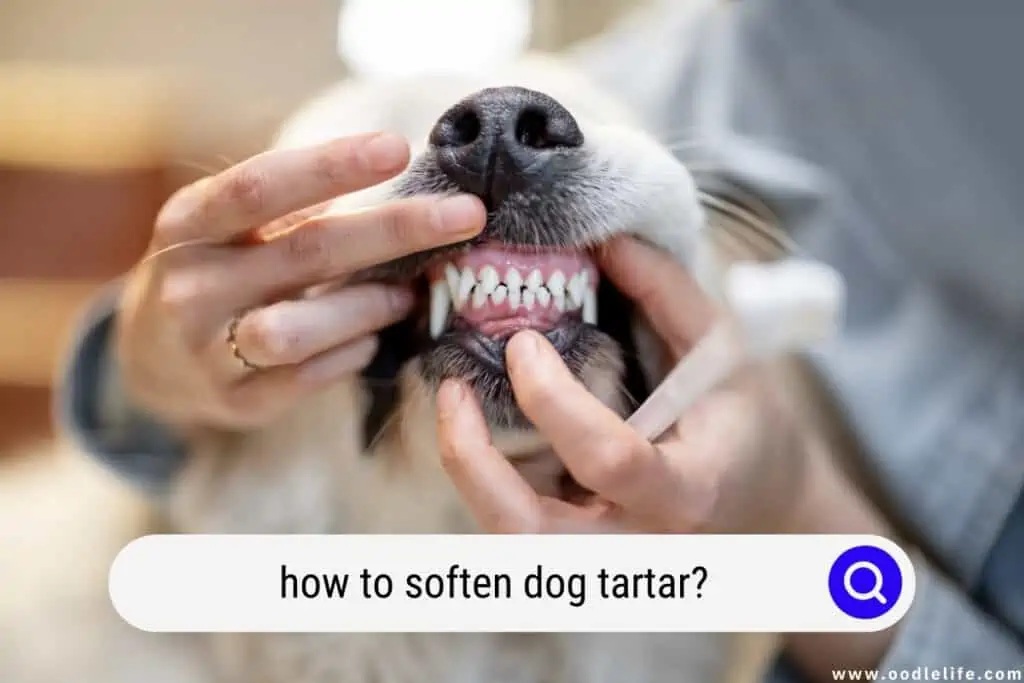
Luckily, many options are available to you and your pup, and we will review some of the best ones. This article will also answer some common questions related to dental care for dogs and the dangers of letting tartar get out of control. So, keep reading to learn more about how to soften dog tartar.
Brushing Your Dog’s Teeth
Like for people, good dental hygiene for dogs starts with a quality toothbrush. However, the toothpaste humans use is not safe for animals because it contains certain chemicals that can be harmful. It’s also not very tasty, so your dog is unlikely to be keen on having you put it in their mouth.
Dog toothpaste comes in many flavors and textures that pups are more likely to enjoy, such as chicken or peanut butter. Moreover, it will not foam like human toothpaste, and they can swallow it in small amounts. Certain kinds are simply a paste that can be swabbed onto the tooth and left there with no brushing required.
The best way to get your pooch accustomed to brushing their teeth is to start them at a young age. Begin by introducing the toothbrush and letting them look at, sniff, and lick it on their own accord. If they seem nervous or anxious, take a break and try again later.
Always offer a treat after as positive reinforcement.
Older dogs may take a bit more work if they have never had their teeth brushed before, but you can introduce it in the same way. You can also try a rubber finger brush to use your finger to brush your pup’s teeth if you think they would find it less objectionable.
Once your pooch is comfortable letting you brush their teeth, you can clean them the same way you do your own. Depending on the toothbrush you choose, you may want to go back and forth or in a circular motion. Be gentle around the gums and take note of your pet’s reactions to avoid making them uncomfortable.
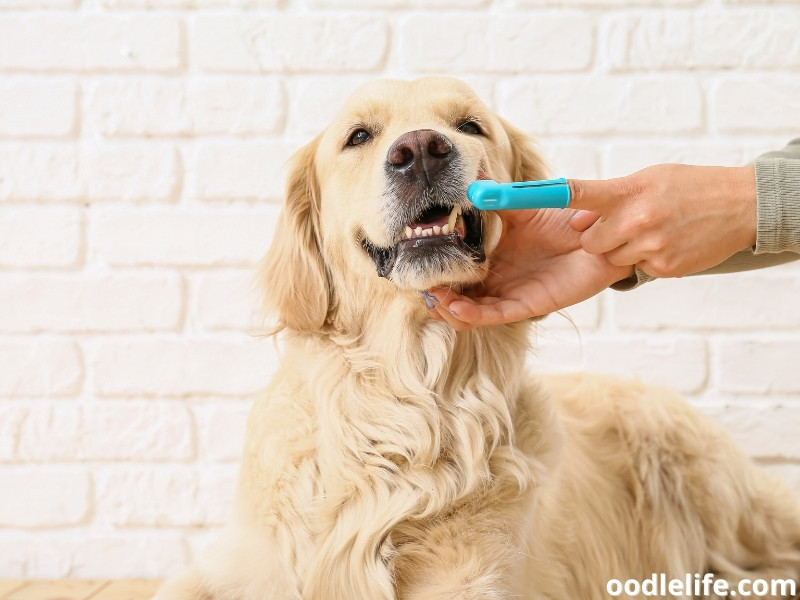
Dental Chews
A dental chew is a type of dog treat specifically designed to help remove plaque and tartar from teeth. They come in various shapes and textures that can help scrub away the gunk that builds up from food and other treats.
If you’re unsure about which product to use, consider reaching out to your vet. Some of the most recommended options will be textured enough to ensure plaque and tartar removal and come in a variety of flavors and shapes. However, these treats are best for dogs over six months old as puppy teeth are much more fragile than adult ones and could easily break.
Even for adults, it’s important to remember that dental chews should be used responsibly and not in excess. One or two dental treats a week is plenty to assist in your pup’s dental hygiene, but any more could make them sick. Always check the ingredients list and be aware of any allergens, such as gluten.
An excellent dental chew will help eliminate bad breath, gum disease, and other issues caused by tartar buildup. They also help keep your dog entertained, reducing anxiety and destructive behavior.
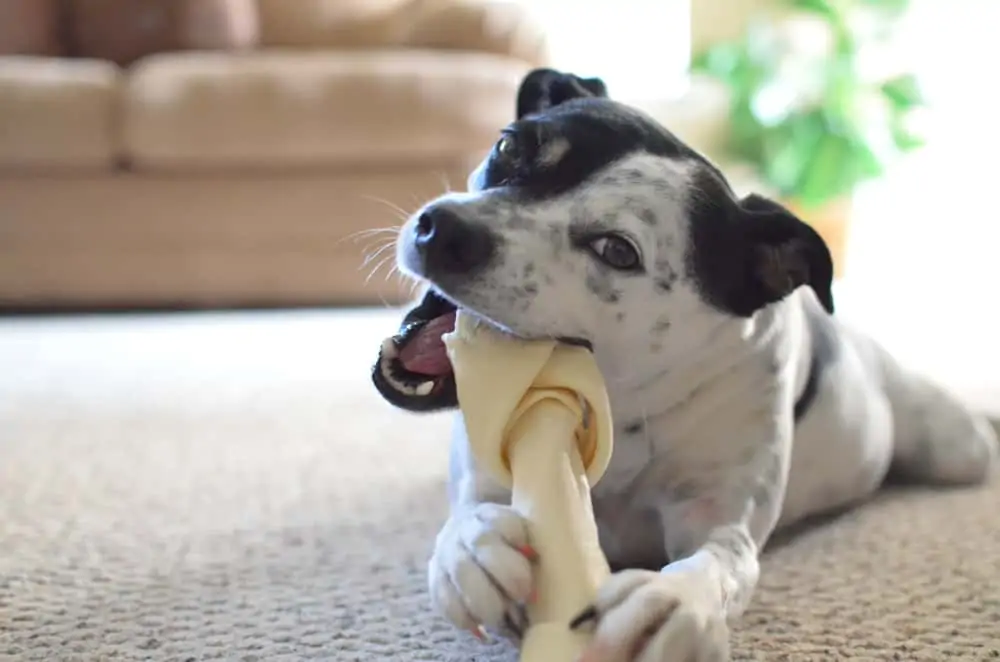
Alternative Options
When searching for how to soften dog tartar, you may come across many different dental hygiene products. Some may work better than others. Smaller dogs, especially those with a short snout, such as a Shih-Tzu, Pug, or Bulldog, are more prone to dental problems, and you may want to try every solution possible.
A water additive is an excellent way to maintain cleanliness in your dog’s mouth, especially for those who don’t like brushing their teeth or have no interest in chews. This option is also commonly used by cat owners. A water additive is similar to mouthwash but is made safe for pets to swallow.
It is even safe for puppies (over twelve weeks old).
Like all dental products, a water additive should be used responsibly and sparingly. Be sure to follow the instructions carefully on whichever option you choose, and don’t overdo it. Look for brands with natural ingredients, and always check with your vet before adding anything to your pup’s diet.
Dental sprays are also a good alternative option to brushing. It is a quick and painless process that will help reduce plaque and tartar, freshen breath, and kill harmful bacteria that can find their way into your dog’s mouth.
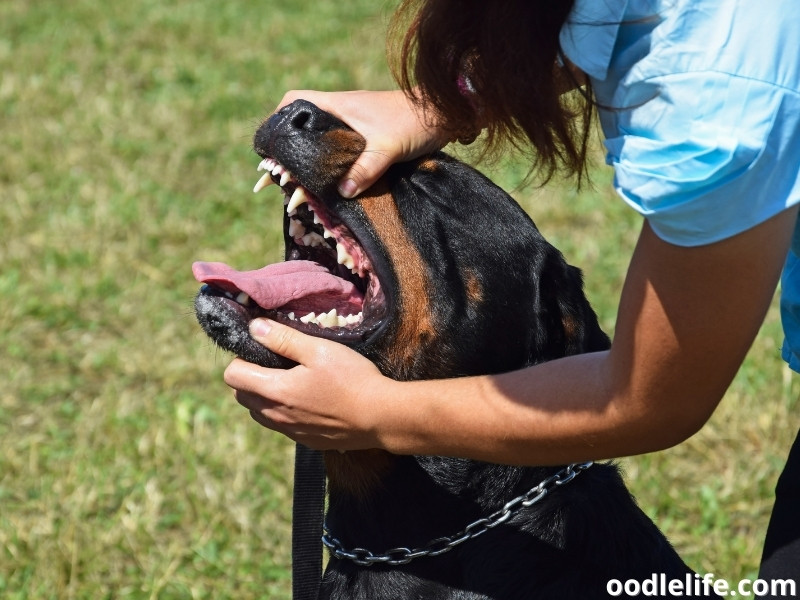
Plaque Vs. Tartar
Plaque is the slimy, sticky substance that coats our teeth after eating food and is easy to remove. It is made up of bacteria that, if not removed, will continue growing along the teeth and gums. Humans and animals alike are susceptible to plaque after eating.
When left untreated, plaque hardens to form tartar. This calcified substance is much harder, but not impossible, to remove. Tartar can form after just 24 hours, and the more time it has to build up, the more difficult it will be to get off and the more problems it can cause.
Tartar will discolor the teeth, starting yellow and getting darker over time. Even the most consistent brushers may experience tartar build-up in hard-to-reach places, such as the gum line or in between teeth. This bacteria buildup can cause an infection that affects everything from the gums, jaw, and even a dog’s internal organs.
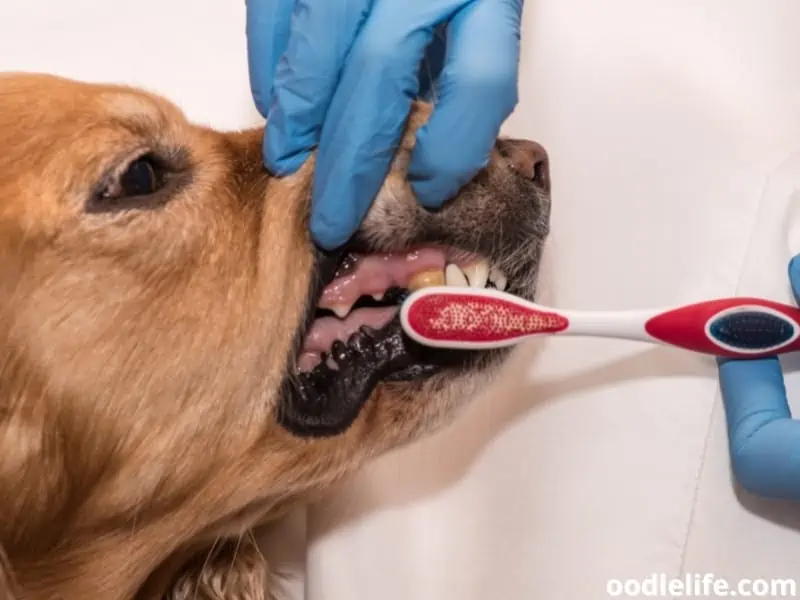
When To Take Your Dog to the Vet?
You can take plenty of preventative measures to prevent tartar buildup, but what happens when it gets too bad? Many of the above methods can soften tartar and get your pup’s pearly whites back to their original glory, but sometimes it’s just not enough.
If your dog is experiencing tooth pain, gum tenderness, or horrible breath, it may be time to call the vet. Tartar can be tough to remove if it has built up over months or years, and the damage might be worse than you think.
A vet may need to do a dental scaling, where they will put your pet under anesthesia long enough for them to do an extensive cleaning with the proper tools. It might leave your pooch sore, but they will be much better off. If your dog has an infection, antibiotics may have to be prescribed.
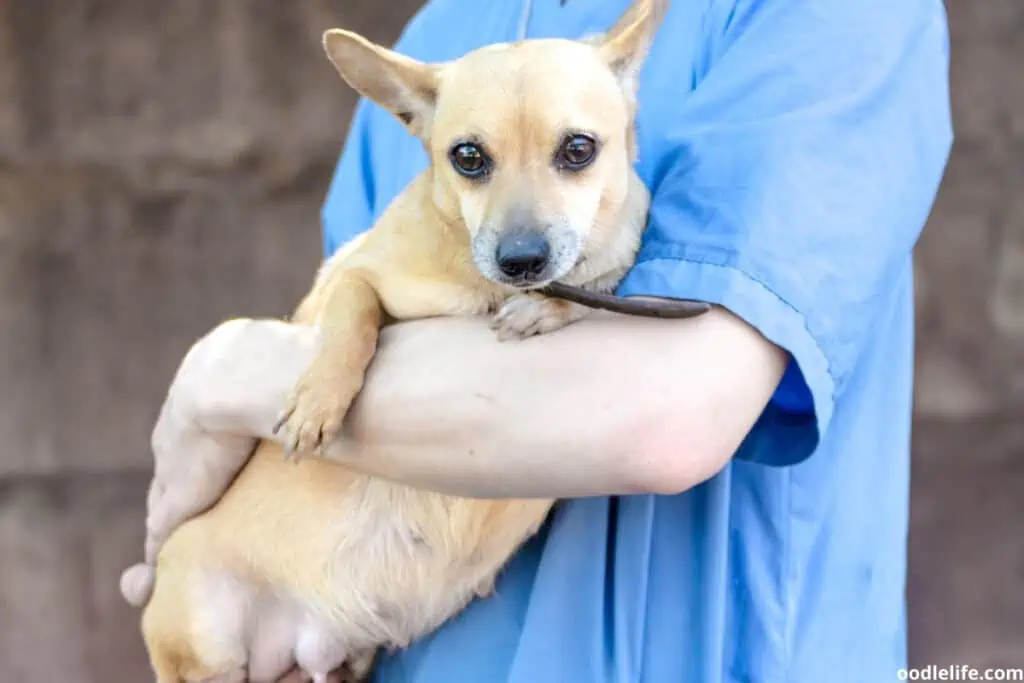
The Dangers of Tartar Buildup
Dental health may seem trivial at first glance, but the truth is that it can affect your dog’s entire body. When left unchecked, the bacteria found in tartar can make their way down into the internal organs, causing often irreparable damage. Untreated tartar buildup can result in:
- Gingivitis
- Tooth loss
- Periodontitis
- Endocarditis
- Kidney failure
- Liver failure
- Weight loss
- Respiratory distress
These terrible health conditions do not happen overnight and are completely preventable, which is why dental hygiene is so important. No matter what, try to brush your dog’s teeth daily and provide them with top-notch kibble and chews to keep them clean and healthy.
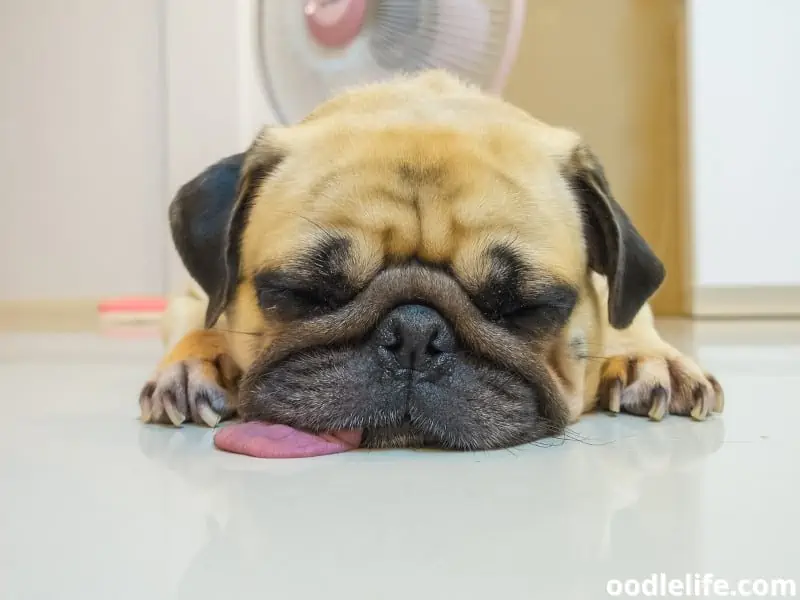
How To Maintain Good Dental Hygiene?
Everything your dog puts into their mouth will contribute to their dental health in one way or another. As long as they can chew, dry kibble is generally the best option for food. Wet foods stick to the teeth more, cause tartar to build faster, and have a higher fat content that can promote weight gain.
The bacteria contained within plaque and tartar love to feed on sugar and carbohydrates, so feeding your dog anything sweet or high carb. Check the ingredients list on whatever you buy to determine if it is a suitable option. Dogs are carnivorous and generally need much more protein than carbs.
Daily brushing will do wonders for keeping your dog’s teeth clean, and nothing can compare. However, if this is not always possible, try to ensure that they are getting weekly dental chews and consistently have some other form of chew toy available. Raw beef bones, antlers, frozen carrots, and other natural chews can help decrease plaque and tartar buildup.
Small dogs are more susceptible to dental issues due to their small mouths and the likelihood of overcrowding. They have just as many teeth as larger breeds, but a lot less room to fit them all. Due to this, they may need a little more TLC to maintain those pearly whites.
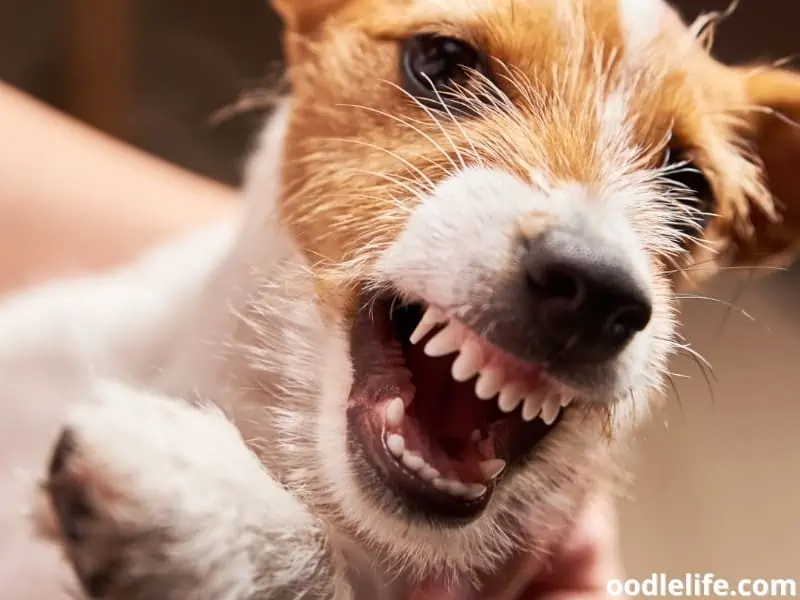
Final Thoughts
So, now you know how to soften dog tartar. We all want the best for our furry friends, and oftentimes that means putting in the work. With just five minutes out of your day, you can ensure that your fluffy companion stays happy and healthy, and their teeth stay strong enough to enjoy all those tasty treats we know you love to give them.